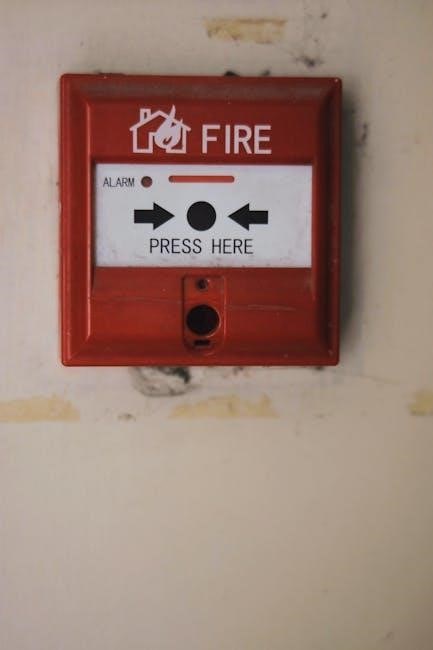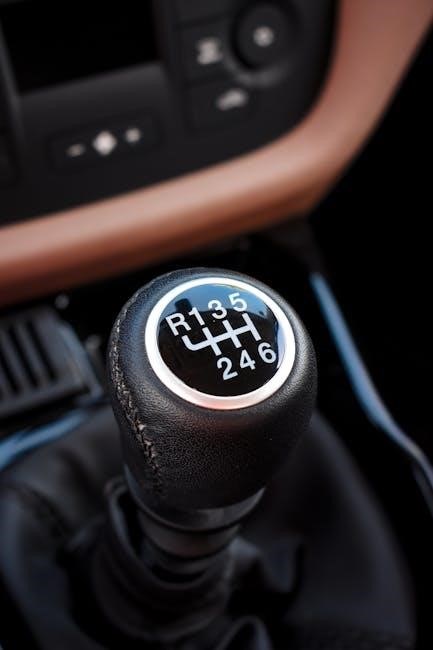The Hayward Salt System provides an eco-friendly alternative to traditional chlorine, converting salt into chlorine for sanitized pool water safely and efficiently, ideal for pools up to 25,000 gallons.
Overview of the Hayward Salt System
The Hayward Salt System is an advanced pool sanitation solution that uses saltwater chlorination to maintain clean and safe pool water. It automatically converts salt into chlorine, eliminating the need for harsh chemical additives. Designed for pools up to 25,000 gallons, the system operates efficiently with low salt concentrations, reducing chlorine odors and skin irritation. The system includes a control panel for monitoring and adjusting settings, along with a salt cell that requires minimal maintenance. Its eco-friendly design promotes better water balance and longevity of pool equipment, making it a popular choice for pool owners seeking convenience and optimal performance.
Benefits of Using a Saltwater Chlorination System
A saltwater chlorination system offers numerous advantages, including reduced chlorine odors and irritation, making swimming more comfortable. It minimizes the need for manual chemical handling, ensuring consistent sanitation. The system’s eco-friendly design lowers chlorine consumption, promoting better water balance and extending equipment lifespan. Additionally, it provides a cost-effective solution in the long run, despite initial setup costs. The Hayward Salt System also enhances swimmer comfort with softer water, reducing eye irritation and skin dryness. Its automated operation simplifies pool maintenance, ensuring a clean and healthy swimming environment with minimal effort. These benefits make it a preferred choice for pool owners seeking efficiency and comfort.
Key Features of the Hayward Salt System
The Hayward Salt System features advanced saltwater chlorination technology, automatically converting salt into chlorine for consistent pool sanitation. It includes a self-cleaning salt cell that maintains optimal performance and extends the system’s lifespan. The system is designed for compatibility with various pool types, including inground and above-ground pools, and offers user-friendly controls for easy operation. Additionally, it integrates seamlessly with other pool automation systems, providing a comprehensive solution for pool maintenance. The Hayward Salt System also includes safety features, such as low salt level warnings and flow switch calibration, ensuring efficient and reliable operation. These features make it a robust and convenient choice for pool owners.

Installation and Setup
The Hayward Salt System installation involves pre-installation checks, step-by-step guides, and setup processes to ensure smooth operation for both inground and above-ground pools, prioritizing safety and efficiency.
Pre-Installation Considerations
Ensure your pool is compatible with the Hayward Salt System, typically suitable for pools up to 25,000 gallons. Check local electrical and plumbing codes to comply with regulations. Verify the system’s power requirements and ensure a GFCI-rated outlet is available. Measure your pool’s dimensions to calculate the correct salt dosage. Assess water chemistry and balance before installation, as improper levels can damage the system. Purchase any necessary adapters or accessories, like the Hayward DIY-POLYPIPE kit for certain pipe types. Plan the cell vessel installation location for optimal water flow and easy maintenance. Consult a professional if unsure about any step to avoid installation issues and ensure warranty validity. Proper preparation ensures smooth operation and longevity of the system.
Step-by-Step Installation Guide
Start by mounting the control box at least 10 feet from the pool, near a GFCI-rated outlet. Connect the cell vessel to the pool’s return plumbing, ensuring it’s installed on a straight pipe section for proper flow. Secure the vessel tightly using the provided hardware. Plug in the control box and power on the system. Calibrate the flow switch according to the manufacturer’s instructions. Add the recommended salt dosage to the pool water and allow it to circulate. Finally, recycle the power to the system and verify proper operation through the control panel. Always follow the Hayward Salt System manual for precise guidance.
Connecting the Salt Cell and Control Unit
Insert the salt cell into the vessel, ensuring it is fully seated and aligned to avoid leaks or improper function. Secure the cell using the retaining nut provided. Connect the cell cap to the control unit, ensuring a tight seal. Plug in the control unit and verify all connections are secure. Power cycle the system to initialize communication between the cell and control unit. Check for any leaks or misalignments before proceeding. Proper connection ensures optimal performance and longevity of the salt system. Always refer to the Hayward Salt System manual for detailed instructions.
Initial System Setup and Calibration
After installation, power on the system and follow the control unit’s prompts for initial setup. Enter your pool’s volume and desired chlorine levels. Use the provided test kit to measure current salt levels and adjust accordingly using the guidelines in the Hayward Salt System manual. Once salt levels are correct, calibrate the flow switch by ensuring proper water flow through the salt cell. Allow the system to run for 24 hours before testing chlorine levels. Regular calibration ensures efficient chlorine production and optimal pool sanitation. Always maintain recommended salt concentrations for best performance.

Operation and Maintenance
Regularly monitor chlorine and salt levels, clean the salt cell as needed, and ensure proper water flow for optimal performance and extended system lifespan.
Understanding the Control Panel and Indicators
The control panel features an LCD display and navigation buttons to monitor and adjust settings. LED indicators show system status, such as power, salt levels, and chlorine production. The “Cell Life Low” LED illuminates when the salt cell nears the end of its lifespan; Error codes like “LO” or “HI” indicate low or high salt levels, while “CL” signals a cleaning cycle. The panel also displays flow switch issues or system malfunctions. Refer to the manual or Hayward’s online tool for troubleshooting error codes and maintaining optimal performance. Regular checks ensure smooth operation and extend the system’s lifespan. Proper use prevents corrosion and scaling;
Daily Operation and Monitoring
Daily operation of the Hayward Salt System requires minimal effort but consistent monitoring. Begin by ensuring the system is plugged into a GFCI-rated outlet, as it operates continuously without an ON/OFF switch. Check the control panel for status LEDs, ensuring no error codes are displayed. Monitor salt levels regularly, adding salt as needed to maintain the recommended concentration. Test water chemistry to keep pH, alkalinity, and stabilizer within balanced ranges. Clean the filter and inspect the salt cell for mineral buildup. Record water test results and system performance to track maintenance needs and ensure optimal chlorine production for a safe and clean swimming environment.
Maintenance Tips for Optimal Performance
To maintain your Hayward Salt System, clean the salt cell every 3-6 months by soaking it in a mild acid solution to remove mineral deposits. Regularly inspect the flow switch and ensure proper water flow to prevent system errors. Check the control panel for error codes and address them promptly. Maintain recommended salt levels and test water chemistry weekly to ensure balance. Replace the salt cell every 3-5 years, depending on usage. Inspect electrical connections for corrosion and tighten them as needed. These steps ensure efficient chlorine production, extend system lifespan, and keep your pool clean and safe.
Cleaning and Replacing the Salt Cell
Cleaning the salt cell is essential for optimal performance. Remove the cell from the vessel and soak it in a mixture of water and mild acid, like muriatic acid, to dissolve mineral deposits. Scrub gently with a soft brush to avoid damaging the plates. Rinse thoroughly and reinstall once clean. If the cell is worn out, replace it every 3-5 years or as indicated by the system. Always follow Hayward’s guidelines for replacement to ensure compatibility and proper function. Regular maintenance extends the cell’s lifespan and keeps your pool water sanitized efficiently.

Troubleshooting Common Issues
Troubleshooting your Hayward Salt System involves addressing error codes, low or high salt levels, and flow switch calibration. Regular checks ensure optimal performance and prevent major issues.
Identifying and Resolving Error Codes
Hayward Salt Systems use LED indicators to signal issues. Common error codes relate to low salt levels, cell life, or flow switch problems. If an error occurs, recycle power by unplugging the system for two minutes. Check the salt level and adjust as needed. Inspect the cell for mineral buildup and clean it if necessary. For persistent issues, refer to Hayward’s interactive troubleshooting tool online or consult the manual. If problems remain unresolved, contact Hayward Technical Support for assistance. Regular maintenance and monitoring can prevent many errors, ensuring smooth operation of your salt chlorination system.
Low Salt Level Warnings and Solutions
A low salt level warning indicates insufficient salt for chlorine production. Check the recommended levels (typically 2700-3400 ppm) and measure salt using a test strip or meter. If low, add the required amount of pool salt evenly around the pool. Allow the system to circulate for 6-8 hours before retesting. Avoid overloading, as this can cause imbalance. Regular monitoring prevents efficiency issues and ensures optimal sanitization. Always follow Hayward’s guidelines for adding salt to maintain proper water chemistry and system performance.
High Salt Level Issues and Corrections
A high salt level can cause the Hayward Salt System to shut down or operate inefficiently. If the salt concentration exceeds the recommended range (typically 2700-3400 ppm), the system may display an error code or stop producing chlorine. To correct this, partially drain the pool water and refill with fresh water to dilute the salt concentration. Test the water again after refilling to ensure levels are within the acceptable range. Regularly monitor salt levels to prevent this issue and maintain optimal system performance. Always refer to the Hayward manual for specific guidance on salt level adjustments.
Flow Switch Calibration and Repair
Proper flow switch calibration is essential for the Hayward Salt System to function correctly. If the flow switch malfunctions, it may prevent the system from generating chlorine. To calibrate, ensure the pool water is balanced and salt levels are correct. With the pump running, check the flow switch for free movement. If stuck, clean or replace it as needed. For repair, turn off the pump, remove the switch, and inspect for debris. Clean or replace parts as necessary and reinstall. Always follow the Hayward manual’s specific calibration steps to maintain accurate flow detection and optimal system performance.

Water Chemistry and Salt Levels
Proper water chemistry and salt levels are crucial for optimal performance. Maintain 2700-3400 ppm salt concentration for efficient chlorine generation and to prevent corrosion or scaling. Regular testing ensures stability and protects equipment and swimmers. Always follow Hayward’s guidelines for accurate adjustments.
Recommended Salt Levels for Hayward Systems
The ideal salt concentration for Hayward systems is between 2,700 and 3,400 parts per million (ppm). This range ensures efficient chlorine production while preventing corrosion or scaling. Salt levels below 2,700 ppm may reduce system efficiency, while levels exceeding 3,400 ppm can damage equipment. Regular testing is essential to maintain optimal levels. Use a high-quality test kit or send a water sample to a certified lab for accurate readings. Adjust salt levels gradually, as sudden changes can disrupt water balance. Always follow Hayward’s guidelines to ensure proper system performance and longevity of your pool equipment.
Understanding Water Balance and Chemistry
Proper water balance is crucial for your Hayward Salt System. It involves maintaining pH, alkalinity, and calcium hardness levels to prevent corrosion and scaling. The ideal pH range is 7.2–7.8, with alkalinity between 80–120 ppm and calcium hardness at 200–400 ppm. Imbalanced chemistry can damage equipment or reduce chlorine efficiency. Regularly test your water and adjust levels using appropriate chemicals. Stabilizer (CYA) should be maintained between 30–50 ppm to protect chlorine from sunlight degradation. Hayward recommends using test kits for accurate measurements and following their guidelines to ensure optimal pool conditions and system performance.
Testing and Adjusting Salt Concentration
Regular testing of salt concentration is essential for optimal performance of your Hayward Salt System. Use a reliable test kit or digital meter to measure salt levels, aiming for 2700–3400 ppm. After adding salt, wait 6–8 hours for it to dissolve fully before testing. If levels are low, add sodium chloride (pool salt) gradually, distributing it evenly across the pool surface. Avoid over-saturating, as exceeding 3400 ppm can cause issues. If levels are too high, drain some water and refill with fresh water. Consistent monitoring ensures proper chlorine production and prevents system malfunctions. Always follow Hayward’s guidelines for accurate adjustments.

Specific Models and Variations
Hayward offers models like the AquaRite and Salt & Swim, catering to different pool sizes and needs. Each model provides unique features for efficient saltwater chlorination systems.
Hayward AquaRite Salt System Manual
The Hayward AquaRite Salt System Manual provides detailed instructions for installing, operating, and maintaining the AquaRite salt chlorination system. Designed for pools up to 40,000 gallons, it ensures efficient chlorine generation using low salt concentrations. The manual covers system components, wiring diagrams, and troubleshooting guides. It emphasizes proper water chemistry, including maintaining salt levels between 2,700-3,200 ppm for optimal performance. Regular maintenance tasks, such as cleaning the salt cell and checking flow switch calibration, are outlined to extend system longevity. The AquaRite manual also includes safety precautions and warranty information, making it an essential resource for homeowners and technicians alike.
Hayward Salt & Swim System Overview
The Hayward Salt & Swim System is an automatic chlorine generation system designed for pools up to 25,000 gallons, offering a low-maintenance alternative to traditional chlorine. It uses a salt concentration low enough to avoid taste, converting it into free chlorine to sanitize the pool effectively. The system is user-friendly, with easy installation and operation, and comes with a one-year warranty. It ensures soft, gentler water on skin and eyes, reducing irritation. Compatible with other pool automation systems, it provides a convenient and efficient solution for pool sanitation, making it a popular choice for homeowners seeking a hassle-free swimming experience.
Differences Between AquaRite and Salt & Swim Models
The Hayward AquaRite and Salt & Swim systems differ in design and functionality. The AquaRite is a more advanced model, offering higher chlorine generation capacity and compatibility with larger pools. It features a longer-lasting salt cell and advanced automation capabilities. In contrast, the Salt & Swim is a more budget-friendly option, designed for smaller pools up to 25,000 gallons. It is simpler to install and operate, with a focus on basic sanitization needs. Both systems use salt to generate chlorine but cater to different pool sizes and user preferences, making them suitable for various applications.

Safety Precautions and Warnings
Always follow safety guidelines when installing or maintaining the Hayward Salt System. Ensure proper electrical connections, avoid exposure to chemicals, and keep the system out of reach of children.
General Safety Guidelines for Installation
When installing the Hayward Salt System, ensure the pool filter pump is powered off. Mount the control box at least 10 feet from the pool and near a GFCI outlet. Use genuine Hayward replacement parts to avoid system damage. Follow local and NEC codes strictly. Keep the area clear of debris and ensure proper ventilation. Avoid touching electrical components with wet hands. If unsure, consult a professional. Always refer to the manual for specific instructions to ensure a safe and correct installation process. Proper setup is crucial for optimal performance and longevity of the system.
Electrical Safety Considerations
Always connect the Hayward Salt System to a GFCI-protected outlet to prevent electrical shock. Ensure the control box is installed within 3 feet of a GFCI outlet and at least 10 feet from the pool. Never submerge electrical components in water. Avoid modifying the system or using non-genuine parts, as this can create electrical hazards. Regularly inspect cables and connections for damage. Disconnect power during maintenance or severe weather conditions. Follow all local and NEC codes for installation. Electrical safety is crucial to ensure proper function and prevent accidents. Always refer to the manual for specific electrical requirements and guidelines.
Chemical Safety and Handling Tips
When handling salt or chlorine for the Hayward Salt System, wear protective gloves and eyewear to avoid skin and eye irritation. Store chemicals in a cool, dry place away from direct sunlight and flammable materials. Follow the recommended salt levels to prevent over-chlorination, which can cause eye discomfort and damage equipment. Never mix different pool chemicals, as this can release harmful gases. Keep chemicals out of reach of children and pets. Dispose of any leftover chemicals responsibly, adhering to local regulations. Always rinse spills immediately and ensure the pool area is well-ventilated during chemical handling.

Warranty and Technical Support
Your Hayward Salt System is backed by a comprehensive warranty program, ensuring coverage for parts and labor. Register your system for extended support and access to expert technicians for troubleshooting and repairs.
Understanding the Hayward Warranty Program
The Hayward Warranty Program offers comprehensive coverage for your salt system, ensuring protection against defects in materials and workmanship. The program typically includes a limited warranty period, varying by product and model. Registration is required to activate warranty benefits, and proof of purchase is necessary for service claims. The warranty covers parts and labor for manufacturing defects, excluding wear-and-tear items like the salt cell, which may have a separate warranty period. For detailed terms and conditions, refer to the product manual or contact Hayward’s technical support team. Proper installation and maintenance are essential to uphold warranty validity.

Contacting Hayward Technical Support
For assistance with your Hayward salt system, contact their technical support team at (61 Whitecap Road, North Kingstown, RI, 02852) or visit www.hayward.com. Online resources include troubleshooting guides and interactive tools to diagnose issues. Phone support is available to address installation, operation, or maintenance concerns. Ensure you have your system’s model number and serial number ready for efficient service. Hayward’s support team is equipped to handle warranty claims, repair inquiries, and general product questions, providing expert guidance to ensure optimal system performance and resolve any operational challenges promptly.
Registering Your Hayward Salt System
Registering your Hayward Salt System ensures warranty validation and access to exclusive support services. Visit the Hayward website and navigate to the product registration section. Enter your system’s model and serial number, along with purchase details. This process activates your warranty and provides personalized product updates. Registration also allows Hayward to contact you with important safety notices and software updates, ensuring your system operates at peak performance. Keep your proof of purchase and registration confirmation for future reference.

Advanced Features and Accessories
The Hayward Salt System offers advanced features like remote control capabilities and integration with pool automation systems, enhancing convenience and performance for a seamless pool experience.
Upgrading Your System with Additional Features
Upgrading your Hayward Salt System can enhance performance and convenience. Consider adding advanced automation, Wi-Fi connectivity, or smart sensors for real-time monitoring. Remote control accessories allow adjustments from your phone or tablet. High-capacity salt cells are available for larger pools or heavier use. Integration with other pool systems, like heaters or lighting, creates a seamless experience. Upgrades can also include energy-saving features or advanced diagnostics for optimal maintenance. Always use genuine Hayward parts to ensure compatibility and maintain warranty coverage. These upgrades not only improve functionality but also extend the life of your system, ensuring a superior pool experience for years to come.
Compatible Accessories for Hayward Salt Systems
Enhance your Hayward Salt System with compatible accessories designed to optimize performance and convenience. Remote control kits allow seamless adjustments from a distance, while Wi-Fi adapters enable smartphone app control. Additional sensors monitor salt levels, water temperature, and chlorine production in real time. Upgrade with high-capacity salt cells for larger pools or increased sanitization needs. Integration kits connect your salt system to pool heaters, pumps, and lighting for synchronized operation. Genuine Hayward replacement parts, like turbo cells and flow switches, ensure longevity and efficiency. These accessories enhance functionality, making pool maintenance easier and more efficient, while maintaining system compatibility and warranty coverage.
Integrating with Other Pool Automation Systems
Seamlessly integrate the Hayward Salt System with other pool automation systems like OmniLogic or AquaPlus for a fully connected experience. Control your salt chlorinator, pool lights, pumps, and heaters from a single interface. Compatibility with Hayward’s automation platforms allows synchronized operation, enhancing efficiency and convenience. Use the Hayward app to monitor and adjust settings remotely, ensuring optimal pool conditions. Integration ensures all components work together harmoniously, providing a smart, energy-efficient solution for modern pool management. This centralized control simplifies maintenance and maximizes system performance, making pool care effortless and enjoyable.
The Hayward Salt System offers a convenient, efficient, and eco-friendly way to maintain your pool, reducing chemical use and providing a safer swimming environment for everyone.
Final Tips for Maximizing Your Hayward Salt System
To ensure optimal performance, maintain recommended salt levels and water balance. Regularly inspect and clean the salt cell to prevent scaling. Schedule seasonal maintenance checks to replace worn-out parts. Monitor chlorine production and adjust settings as needed. Keep the control panel clean and dry to avoid electrical issues. Always use genuine Hayward replacement parts to maintain system efficiency. Test water chemistry weekly and adjust accordingly. Store the system properly during off-season to prolong its lifespan. Follow these tips to enjoy a hassle-free, sanitized pool experience with your Hayward Salt System.
Importance of Regular Maintenance
Regular maintenance is crucial for the longevity and efficiency of your Hayward Salt System. Cleaning the salt cell every 3-6 months prevents mineral buildup and ensures optimal chlorine production. Check salt levels weekly and adjust as needed to maintain proper water balance. Inspect and replace worn-out parts, such as the flow switch, to prevent system shutdowns. Seasonal maintenance, like draining pipes in winter, protects the system from damage. Proper upkeep prevents corrosion, scaling, and low chlorine output, ensuring your pool remains safe and clean. Consistent care extends the lifespan of your system and guarantees peak performance year-round.